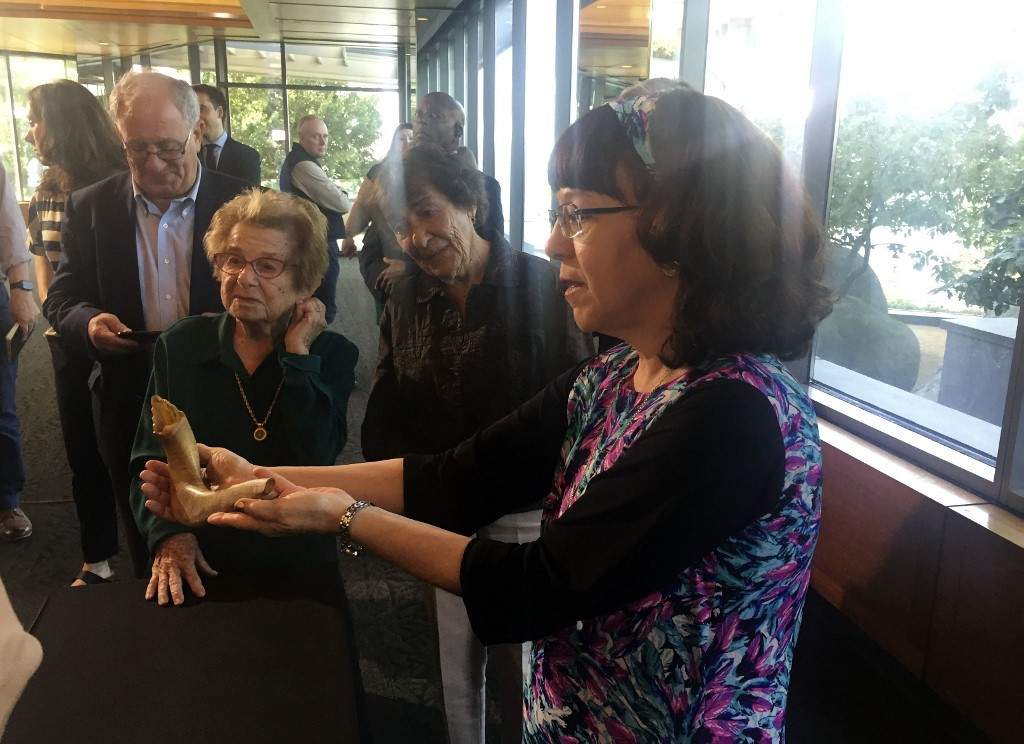Popular Reads
Top Results
Can't find what you're looking for?
View all search resultsPopular Reads
Top Results
Can't find what you're looking for?
View all search resultsTraditional Jewish instrument that survived Auschwitz shown in New York
Change text size
Gift Premium Articles
to Anyone
 Judith Tydor Baumel-Schwartz, daughter of Chaskel Tydor, who came back from the Auschwitz concentration camp presents a shofar, a ram's horn made into a religious instrument that was used inside Auschwitz camp to play religious music, during a press conference at the Museum of Jewish Heritage on September 23, 2019 in New York. (AFP/Thomas Urbain)
Judith Tydor Baumel-Schwartz, daughter of Chaskel Tydor, who came back from the Auschwitz concentration camp presents a shofar, a ram's horn made into a religious instrument that was used inside Auschwitz camp to play religious music, during a press conference at the Museum of Jewish Heritage on September 23, 2019 in New York. (AFP/Thomas Urbain)
A
Jewish ram's horn instrument hidden and blown behind the barbed wire of Auschwitz was shown publicly for the first time Monday in New York, where it will be included in an exhibition.
The shofar -- a wind instrument traditionally used at services during the Jewish High Holidays, whose sound is a call for mercy -- was obtained by the former prisoner Chaskel Tydor during a "death march".
During these marches, Nazis forced prisoners to walk on foot in winter to other camps as Soviet troops encroached.
Tydor survived the Holocaust and moved to Israel before emigrating to the United States.
He kept the shofar until his death in 1993, when it was passed on to his family.
His daughter, Judith Tydor Baumel-Schwartz, presented it publicly on Monday at Manhattan's Museum of Jewish Heritage.
Read also: In Albania, a sole Jewish history museum on the brink
Nazis forbade all Jewish religious practices in camps under punishment of death.
But according to several accounts, this did not prevent Auschwitz prisoners from using the shofar, which emits a powerful foghorn-esque blast, at great risk to their lives.
"Even for non-believing Jews, this was an act of pure defiance," said Michael Berenbaum, a curator of the exhibition titled, "Auschwitz. Not Long Ago. Not Far Away."
"It was built in Auschwitz precisely because it was forbidden."
The shofar will go on display at the exhibition that runs until January 3, 2020, having already drawn some 100,000 visitors during an earlier showing in Madrid.
The instrument will also be used in two Manhattan synagogues for Rosh Hashanah, the Jewish New Year, and Yom Kippur, the Day of Atonement.










